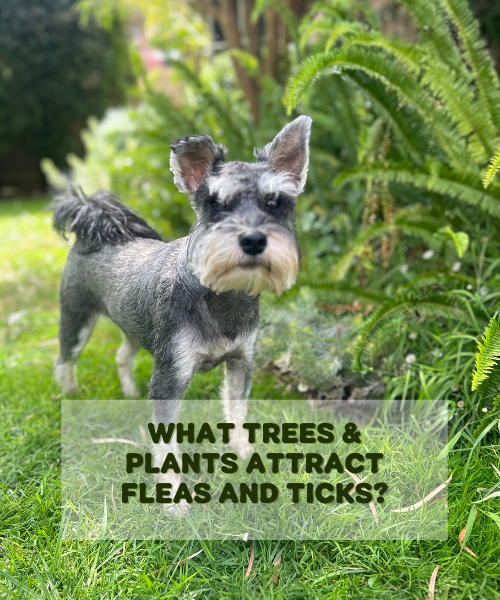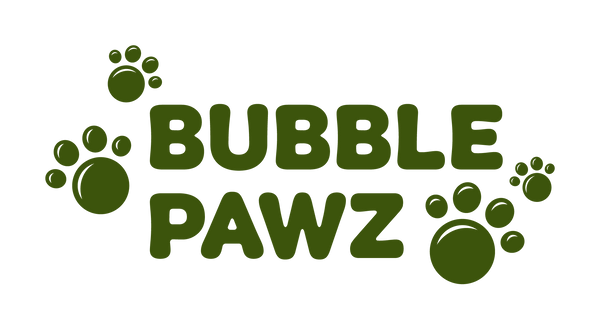
The Hidden Link Between Your Garden & Pests: What Trees & Plants Attract Fleas & Ticks?
Share
Your garden is more than a vibrant outdoor space; it's a sanctuary for both you and your pets. However, there's a hidden side to your luscious greenery that can become a hotbed for pests, specifically fleas and ticks. These nuisance pests are not just a headache for your pets; they can infiltrate your home, leading to discomfort and potential health risks. As a pet owner, understanding the correlation between your landscaping choices and pest attraction is crucial for prevention and control. Let's explore how the flora in your environment can either repel or recruit fleas and ticks.
The Scents and Sights That Spell Trouble
Fleas and ticks are crafty bugs that thrive in specific environments. Your garden can unknowingly provide the ideal living conditions for these pests. Certain types of trees and plants produce scents and textures that appeal to fleas and ticks or inadvertently create hiding spots.
- Deciduous Trees with Dense Foliage: Fleas and ticks are drawn to moisture and shade. Trees with dense foliage, particularly those that hold moisture well, like willow or oak, create shaded and damp areas that are a haven for pests.
- Leaf-Litter Lovers: Fleas lay their eggs in the spaces that adult fleas cannot penetrate, often preferring organic matter and leaf litter for protection. Plants that shed a lot, such as maples or fruit trees, provide ample hiding spots.
- The Musky Attraction of Mulch: Ever wonder why ticks love mulch so much? Mulch is an ideal environment for ticks, providing not only moisture but organic matter to supplement their diet. The strong scent and close ground contact invite small mammals, which in turn attract ticks.
- Overgrown Vegetation: Neglected gardens with overgrown bushes and shrubs offer an ideal environment for pests, as they provide a cool, shady place to wait for hosts to come by.
The takeaway here is to maintain garden hygiene and, where possible, opt for plants that deter pests rather than those that invite them in for a feast.
Cultivate a Pest-Repelling Garden
It is entirely possible to use your green thumb for a foliage strategy that deters fleas and ticks. Plants and trees that are known for their pest-repelling properties can act as natural barriers, safeguarding your yard and pets from unwanted hitchhikers.
- Aromatic Plants: Species like lavender, mint, and chrysanthemums, because of their strong scents, make it unpleasant for pests to stick around.
- Moss and Ivy: These ground covers may attract wildlife that preys on ticks, helping to keep their populations in check.
- Cedar Trees and Cypress Mulch: Both possess natural oils that are offensive to fleas and ticks, making them great choices for landscaping.
Consciously choosing plants and trees that can discourage pests will not only benefit your garden aesthetically but also contribute to your integrated pest management strategy.
Hydration Stations for Ticks
Ticks famously despise dry environments—moisture is their lifeline. In your garden, certain trees and plants can inadvertently become water sources that attract these critters.
- Stagnant Water Attractants: Any area with stagnant water, such as birdbaths or water collected at the base of certain plants, becomes host to ticks seeking a drink.
- Areas with High Humidity: Shade-creating plants often maintain a higher level of humidity, mimicking the conditions ticks find in their natural habitats.
- Excessive Leaf Coverage: Overly wet leaf litter can directly contribute to creating the moist climate ticks adore.
By taking measures to reduce stagnant water and maintaining a balanced level of moisture in your garden, you can significantly reduce the attractiveness of your yard to ticks.
Understanding Integrated Pest Management
Integrated Pest Management (IPM) is a holistic approach that combines multiple strategies to manage pests effectively while minimizing the risks to people and the environment. When it comes to fleas and ticks, your garden can be an instrumental part of your IPM.
- Companion Planting: This method involves planting different species close together to provide mutual benefits. For instance, garlic and rosemary can act as natural flea and tick repellents, while attracting pollinators to your garden.
- Attracting Natural Enemies: Encouraging the presence of birds, beneficial insects, and small mammals that feed on fleas and ticks can help control their populations.
- Regular Maintenance: Consistent maintenance, from mowing the lawn to pruning bushes, can reduce hiding spots for pests and their hosts.
Turning the Tide: Pet-Friendly Pesticide-Free Solutions
Now that we've identified the issues, it's time to discuss solutions. For many pet owners, the idea of combating fleas and ticks with harsh chemicals that could harm their furry friends is out of the question. Thankfully, there are natural alternatives that can help to denature flea and tick habitats without compromising pet health.
A Spritz of Safety: Organic Flea and Tick Spray
Bubble Pawz offers a solution in a bottle, a natural flea and tick spray for pets that uses essential oils to repel pests. Spritzing your pets before they venture into the garden can help keep them pest-free without risking their health.
Waging War with Washes: Organic Shampoos and Soaps
Showering your pet with natural shampoos can not only soothe the skin but actively repel fleas and ticks. Bubble Pawz's organic flea and tick shampoo uses plant-based ingredients that pests hate, making bath time both pleasurable for your pet and dreadful for would-be stowaways.
Unmasking the Unknown: Neem Oil, the Unsung Hero
Neem oil has long been used as a natural pesticide, and for good reason. It's effective against a broad spectrum of pests while being safe for most pets. Bubble Pawz places its trust in neem oil, creating an unscented dog soap that gets the job done with minimal frills.
A Final Word on Safety and Sustainability
While deterring fleas and ticks is a top priority, it's essential to do so with sustainability and safety in mind. Avoid using synthetic chemicals that can harm beneficial insects and the wider environment. Instead, opt for natural or organic solutions that are effective against pests without causing collateral damage.
- Eco-friendly Pesticides: Many natural pesticides have demonstrated effectiveness against fleas and ticks without compromising the environment.
- Maintain a Balance: The goal of a pest-repelling garden is not to completely rid the world of fleas and ticks but to maintain a healthy balance where they do not pose significant threats to you or your pets.
- Professional Advice: If in doubt, seek the advice of a professional landscaper or pest control specialist who can offer guidance on the best practices for keeping your garden pest-free while preserving its natural integrity.
Understanding the hidden link between your backyard and flea problems is the first step to solving it. Implementing natural and pet-safe solutions like those offered by Bubble Pawz can be a game-changer in the battle against these pesky parasites. Remember, a pest-free pet is a happier pet—and a happier pet makes for a happier home.
Your garden can remain the haven it was designed to be, teeming with life that enhances your outdoor experience, provided you take the necessary steps to keep the pesky, unwanted guests at bay. Enjoy the fresh air, the sunshine, and the company of your pets, secure in the knowledge that you've taken proactive measures to protect them from the potentially harmful effects of fleas and ticks.
